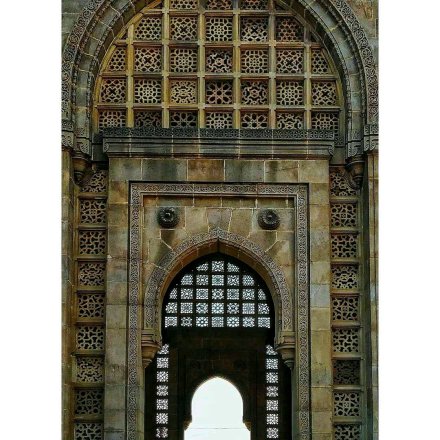
https://www.tripoto.com/trip/a-day-in-mumbai-5d39c59b52661?utm_source=Android_App%26utm_medium=
Selected to present at a conference in Mumbai!
I mean could things get any better?!
If you like traveling, then this was golden! Atleast, it was for me!
This trip had ‘First ever solo trip’ written all over it!
I booked my flights well in advance. Ibibo had some crazy deals going on. I booked my bunk at Zostel, Mumbai for 1.3k for three nights. And, I was set.
Midnight flights are fairly cheaper than the morning ones, so if you have anyone to pick you up, book these. If you’re willing to doze off at the airport, book these again.
I landed in Mumbai at 4am on a cold Thursday morning. I slept for a bit till I got uncomfortable and then decided to head to Zostel. (I wanted an early start to the day, you see)
Zostel generally let’s you stash your luggage, use the washroom and be on your way. 5:30 am I was on a tuktuk to Andheri, and the city was already awake. I was checked in at 5:50am (They were just so sweet!) And after a little freshening up, I was on my way.
I was adviced to take the Metro to the local and head to Colaba from there. Not being too sure about going on a local, I took a bus.
Do. Not. I mean, just do not, even in your wildest of dreams take the bus from Andheri to Colaba. It took me three hours to get there. (I won’t complain here because I met the sweetest old lady who became my tour guide and told me how to brave my way around the city)

If you’re in Andheri, or elsewhere take a can or a local. The autos don’t operate here. The region from Sion onwards, doesn’t allow tuk-tuks. My roommate at Zostel belived that it was because Mumbai was reclaimed land. It wouldn’t be able to best the brunt of additional vehicles.
Reports online claim that the reason could be political. A dude on Quora said that roads in South Mumbai are narrow and curvy and tuk-tuks wouldn’t be able to navigate (Have you ever been in a rickshaw? They’d balance on two wheels if they had to)
One article sounded more down to Earth, it said that the traffic was already bad with vehicles taking far too long to move an inch. Adding rickshaws would only make things worse and harder.
That apart, once I was at Colaba. I was awed. I was flattered. The place and the architecture was everything that I imagined and more.
I roamed around under the canopy of trees in the narrow bylanes of Colaba till I got on the main steet. From far away, the place was an absolute sight to watch. Taj Mahal Palace on the left and the Gateway on the right flanked by the noiseless sea.

The place was crowded. Tourists flooded The Gateway. Photographers flocked the place and the uncles who print your photo in a jiffy waited for a customer to click.

This place just did not disappoint.
After spending a while here, I shopped. I shopped to my heart’s content. Remember to carry cash here. Some of them accept Paytm or Google pay, but most of them prefer cash.
While here you can always eat at Leopard Cafe, which is a name iconic in itself.
I got quite a few trinkets here. An antique compass, a magnet, a few dress, and what not.
I realised after my shopping spree that I was running out of time. The sweet old lady I’d met earlier, had warned me to take the local back but to do the same before the rush hour began.
I still wanted to visit a few churches and the Afghan Church was quite a distance away. I went instead, to the Cathedral of Holy Name. The place was all peace and quite and much needed tranquility in the city that never stopped or slept.
I then walked around a bit looking at all the colonial era things that the city had to offer before I got to the local that took me back to my stay for the weekend.




